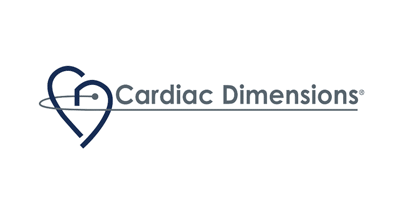KIRKLAND, Wash. — Cardiac Dimensions, a leader in the development of innovative, minimally invasive treatments for functional mitral regurgitation (FMR) in patients with heart failure (HF), today announced the findings of a post hoc analysis of pooled prospectively collected data from three studies of the Carillon Mitral Contour System® with a focus on 5-year survival rate and the determinants of long-term survival. The data was presented in a late-breaking trial session at the Cardiovascular Research Technologies meeting (CRT 2020) in National Harbor, MD.
Related Article: Cardiac Dimensions Carillon® System Improves FMR & Slows Worsening of Heart Failure
Dr. Janusz Lipiecki, a cardiologist in the Center for Interventional Cardiology of Pôle Santé République in Clermont-Ferrand, France, presented the data on behalf of all TITAN, TITAN II and REDUCE FMR clinical study investigators and commented, “The recent publication of the REDUCE FMR data demonstrated a significant reduction in regurgitant volume and favorable left ventricular remodeling1, confirming the results from prior studies, yet questions remained about the long-term impact of the Carillon device.” He continued, “As an investigator, I am proud to present the results of this analysis demonstrated that patients with heart failure and moderate-to-severe FMR who underwent transcatheter mitral valve repair with the Carillon device, had a favorable 5-year survival rate which was associated with changes in clinical and hemodynamic parameters during the first year of follow-up.”
A total of 74 patients from the TITAN, TITAN II and REDUCE FMR clinical studies who had symptomatic congestive heart failure despite guideline-directed medical therapy, grade 2+ to 4+ FMR, left ventricular enlargement, and reduced ejection fraction was assessed as part of the analysis. For all patients, echocardiographic parameters were available through the 12-month visit and vital status was available through 5 years. The association of patient characteristics and changes in echocardiographic parameters at 6 and 12 months with long-term survival was analyzed using Cox proportional hazards regression. Key findings from the analysis include:
- Over 1 year of follow-up, the New York Heart Association (NYHA) class decreased in 64% of patients, distance on the 6-minute walk test increased, and echocardiographic measures indicated significant decreases in MR grade and favorable left ventricular remodeling.2
- The Kaplan-Meier survival rate was 83.6% at 1 year, 73.1% at 2 years, 67.9% at 3 years and 56.2% at 4 and 5 years of follow-up. 2
- Primary determinants of long-term survival were a decrease in NYHA class, an increase in 6-minute walk test distance, and a decrease in regurgitant volume during the first year of follow-up. 2
- Three-year mortality rate compared to published outcomes of COAPT and guideline-directed medical therapy (GDMT), using matched patient populations, was 33.7% for Carillon, 42.8% for MitraClip in COAPT and 55.5% for GDMT – Figure 1. 2
“Mitral regurgitation in the context of heart failure is strongly associated with increased morbidity and mortality. We continue to see a growing body of evidence demonstrating the consistent effectiveness and safety of the Carillon System. The long-term data presented today suggests the primary clinical benefit of percutaneous mitral valve repair may be enhanced after the ventricle has had some time to remodel. We have consistently seen improvements in left ventricular dimensions, which typically is associated with mortality benefits. One would, therefore, anticipate long-term benefits from a decrease in LV volume overload, and these data are supportive.”
– Steven L. Goldberg, MD, Tyler Heart Institute, Community Hospital of the Monterey Peninsula and Chief Clinical Officer at Cardiac Dimensions
Gregory D. Casciaro, President and CEO of Cardiac Dimensions, commented, “This analysis of three important FMR clinical studies is the first to look at five-year follow-up and brings new insights into the long-term role of percutaneous treatment.” He continued, “We are pleased the results confirm a favorable long-term mortality benefit of the Carillon System, supporting the significant improvement in MR and favorable remodeling of the left ventricle, as shown in REDUCE FMR. This reaffirms the effectiveness and safety of the Carillon System and underlines the value of early treatment to slow the deterioration of heart failure.”
An estimated 26 million people, worldwide, suffer from heart failure3 and of those, approximately 70 percent have FMR. Heart failure is a significant clinical and economic burden with direct and indirect costs expected to grow to $70 billion by 2030.4
About the Carillon Mitral Contour System®
The Carillon System offers a simple right heart approach to transcatheter mitral valve repair (TMVr) designed to reshape the anatomy and function of the mitral apparatus from the coronary sinus. Distal and proximal anchors, connected by a shaping ribbon, utilize the heart’s venous anatomy to cinch the mitral apparatus, without compromising the valve or future treatment options.5,6 The Carillon System is designed to treat the primary cause of functional mitral regurgitation (FMR) in patients with MR grades 2+, 3+ and 4+ and is the first and only device to demonstrate a reduction in regurgitant volume and favorable left ventricular remodeling in a randomized sham-controlled clinical trial of percutaneous valve therapy. 7,8,9
About Cardiac Dimensions
Cardiac Dimensions is a leader in the development of innovative, minimally invasive treatments to address heart failure and related cardiovascular conditions. Privately held, the company’s lead investors include Aperture Venture Partners, Arboretum Ventures, HostPlus, Life Sciences Partners, Lumira Ventures and M.H. Carnegie & Co. Cardiac Dimensions is headquartered in Kirkland, Washington and has operations in the United States, Australia, and Germany.
